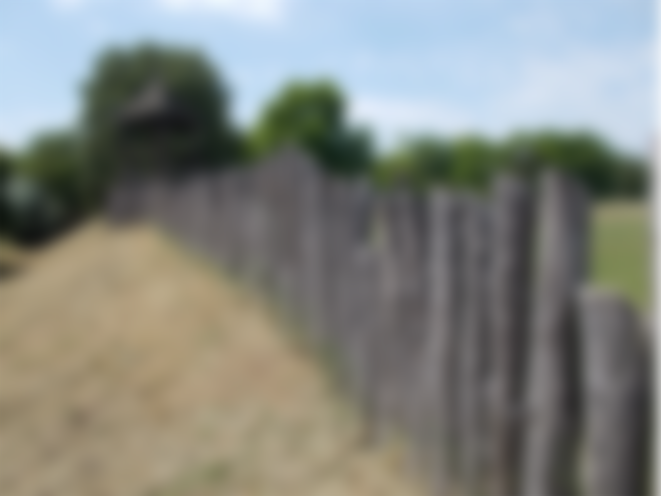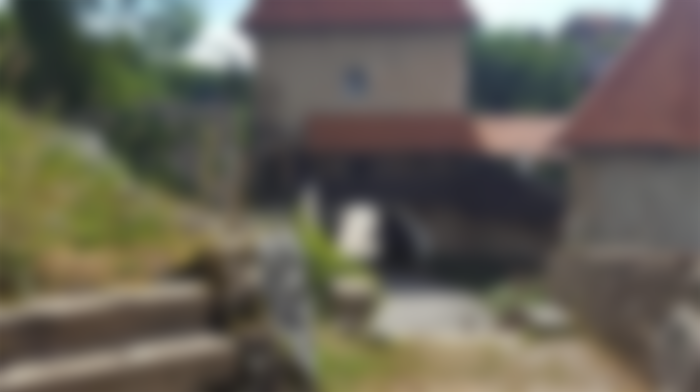For the entire period preceding the 12th century, when the entire area of Croatia and Slavonia came under the rule of Arpadović, there is relatively little data on aristocratic towns. In that dark period, there is one exception, today the lost fortified town of Prince Ljudevit Posavski, which in historical sources after the Roman Empire is the first mention of the existence of a town in the continental part of Croatia.

Ljudevit Posavski was the prince of Pannonian Croatia, and he ruled from 810 to 823. In the "Frankish Chronicles" he is known as Liudewitus, dux Pannoniae inferioris (Ljudevit, prince of Lower Pannonia). He is remembered in history for his uprising against the Franks, which was provoked by the cruelty of the administration of the Frankish Margrave Kadolach, governor of Friuli.
Frankish campaign!
The Frankish chronicles Annales Regni Francorum record that in January 820 it was decided at a council in Aachen that the Franks would send as many as three separate armies to Louis's rebels, which was to be done “as soon as spring arrived and the grass became edible for horses. “ A new campaign against Ljudevit from three directions: the northern Frankish army from Bavaria moved along the Danube valley, and penetrated across the Drava towards Pannonian Croatia; the southern army from Friuli moved across the alpine passes. The third army set out from Tyrol via Carinthia. The first two armies were stopped by Ljudevit's forces, the first on the Drava and the second in the Alps. Before the third, he retreated towards Croatia, which then opened the way for the others.

After penetrating the area between the Sava and the Drava, the Franks were left with only plunder, as Ljudevit did not start battles there. The same thing happened the following year, 821. In October of that year, at the Council of Diedenhofen, the Frankish generals informed the emperor that Louis did not want to engage in battle.
A mysterious fortress!
Historian Ferdo Šišić believes that the town "was located somewhere in the south, around Sisak" where Ljudevit also dined, while Ivo Goldstein opens the possibility that it was located on a hill below Medvednica, such as Gradec or Susedgrad. Of the possible locations, Požega and Papuk are also mentioned.

Legend has it that near Gornji Hruševac near Velika Gorica, on the top of a steep hill called Gradišće, lie the remains of the fortress of Prince Ljudevit Posavski, which was built on the ruins of the ancient Roman city of Ad Fines. Observing, however, the broader context of the abbreviated source, three important facts about the first noble city of this area are known. Its builder was Ljudevit and was built on a steep hill and last: the city the Frankish army could not conquer and thus carry out its fundamental task: to destroy the rebellion.

For this reason, it is assumed that the city had to be spacious enough to accommodate a significant military force, which meant large supplies of food and access to drinking water. In any case, the city had to be able to withstand a months-long siege and have its own workshops and dwellings within the defensive ring.
In doing so, it should be borne in mind that at the beginning of the 9th century, wood was a building material, not stone, and in any case, Ljudevit's city was built of wood.
On the other hand, the tree could not be a serious obstacle to the Frankish army, so they were prevented from conquering by something else - the fact that Louis built his city in a steep and difficult position on all sides.

Very little is known about Ljudevit's city, that it was located on a steep hill and that it could not be conquered by the then strongest army. Its wooden structure has long since rotted, possible traces of wooden structures have been destroyed in a shallow humus layer of rocky peaks by erosion and later construction in some solid material. It is known, however, that research at some sites has confirmed the existence of structures that, in terms of construction style, could correspond to the style in which the town of Ljudevit Posavski was established. In Gradec, for example, during research at the extreme northern tip of its ground plan triangle, a part of the rampart made of wooden shapes between which earth was packed was discovered.

During archeological excavations of the northern courtyard of the old town of Ozalj, masonry structures were discovered above the late antique remains that point to a “highly urbanized town”, on the basis of which one of the researchers, Lazo Ćurković, concludes: this lower one is much older and that already in the tenth century there was an entrance to the city here… ” On the other hand, research near Gornji Hruševec in today's municipality of Kravarsko in a place called "Gradišće" revealed a Roman settlement surrounded by walls of baked red bricks along the edge of a steep hill. In the center of the town, there was a circular elevation several tens of meters high, on the foundations of which there was a defensive tower in the later Old Croatian period. Remains of old Croatian weapons and pottery were also found. The actual location of the lost city of Prince Ljudevit remains a mystery about which newer theories appear over time, but the fact remains recorded in the chronicles; once upon a time, somewhere in continental Croatia, there was a powerful, fortified town on a steep hill. According to the description from the annals and field research, there are similarities that suggest that the ancient Ad Fines is the city where Ljudevit Posavski took refuge.
Defeated after repeated successful resistance to the superior Frankish troops, Ljudevit, on the other hand, took refuge in Dalmatia, where the uncle of his enemy and the Frankish vassal Borne had him killed.





